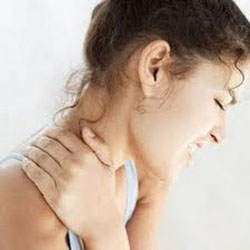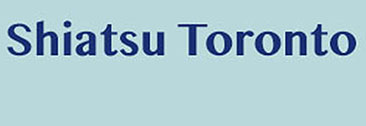Tension Headaches
Who Gets Tension Headaches?
Tension headaches, often referred to as stress headaches are the most common type of headache. It is estimated that tension headaches account for nearly 90% of all headaches and that approximately 3% of the population reports to have chronic tension headaches.
About 30-80% of the adult population suffers from occasional (also called “episodic”) tension headaches.
Approximately 3% of adults suffer from daily tension headaches, which can be labelled “chronic”.
Women are twice as likely to suffer from tension headaches as men. One study found that almost 90% of women and about 70% of men experience tension headaches during their lifetimes.
Tension headaches are more common among middle-aged adults. The incidence of tension headaches appears to peak in the 40s, though people of all ages can get this type of headache.

Frequency and Duration of Tension Headaches
A typical tension headache lasts 4–6 hours, but some headaches have been known to last for days, months or even years. A tension headache may appear periodically (episodic, less than 15 days per month) or daily (chronic, more than 15 days per month). Chronic tension headaches may vary in intensity throughout the day, but the pain is almost always present. Episodic tension headaches usually begin gradually, and often occur in the middle of the day. The “severity” of a tension headache increases significantly with its frequency. Chronic tension headaches come and go over a prolonged period of time. The pain is usually throbbing and affects the front, top, or sides of the head. Although the pain may vary in intensity throughout the day, the pain is almost always present. Chronic tension headaches do not affect vision, balance, or strength.
Signs and Symptoms of Tension Headaches
A tension headache is typically described as a mild to moderate pain, or a constant pressure that feels like a tight band or vise is wrapped around the sufferer’s head. The pain of a tension headache is frequently present on both sides of the head simultaneously, but it can radiate outwards to the neck, eyes, or other muscle groups in the body. While most tension headache pain is typically mild to moderate, it may, on occasion, be quite severe. People with tension headaches commonly report these symptoms:
- Mild to moderate pain or pressure affecting the front, top or sides of the head
- Headache occurring later in the day
- Difficulty falling asleep and staying asleep
- Chronic fatigue
- Irritability
- Disturbed concentration
- Mild sensitivity to light or noise
- General muscle aches
Unlike with migraine headaches, there are no associated neurological symptoms (e.g. muscle weakness or blurred vision) in people with tension headaches. Additionally, severe sensitivity to light or noise, stomach pain, nausea and vomiting are not symptoms usually associated with tension headaches.
What Causes Tension Headaches?
There is no single identifiable cause for tension headaches. The Mayo Clinic reports that while experts used to think that the pain of tension headache stemmed from muscle contraction in the face, neck and scalp, perhaps as a result of heightened emotions, tension or stress, research now suggests that there doesn’t appear to be a significant increase in muscle tension in people diagnosed with tension headache The most common theory about tension headaches suggests that some form of “mixed signals” involving nerve pathways to the brain, are the root cause. It has also been suggested that the increased muscle tenderness found in the neck and shoulders of tension headache sufferers may be the result of them having overactive pain receptors. Another theory is that the pain may be caused by a malfunctioning pain filter which is located in the brain stem. The view is that the brain receives information from muscles in the head, neck and shoulders, and misinterprets this signal as pain. A number of precipitating factors may contribute to the development of tension headaches. Potential triggers include:
- Stress, especially after long, focused and stressful hours of work or study
- Depression and anxiety
- Poor posture
- Jaw clenching
- Lack of sleep
- Sitting or standing in an awkward, uncomfortable or stressful position for a prolonged period of time
- Hunger or irregular meals
- Eyestrain
- Overexertion
- Traditional Treatments
The goals of treatment for tension headaches are to both prevent further attacks and relieve current pain. Fortunately, many effective treatments for tension headaches are available. Managing a tension headache is often a balance between fostering healthy habits, finding effective nondrug treatments and using medications appropriately.
Medications
Preventive or prophylactic medications, such as pain relievers, muscle relaxants and anti-depressants are used to keep individuals from getting tension headaches in the first place. Such medications are are used daily even if a person doesn’t have a headache. Over-the-counter painkillers are often the first line of treatment recommended for tension headaches. Some of these painkillers can also be used to prevent headaches in those individuals suffering from chronic tension headaches. If over the counter pain relievers don’t help, a physician may recommend a prescription strength pain reliever or muscle relaxant. Keep in mind that medications don’t cure headaches they just relieve the symptoms temporarily. Over time, pain-relievers and other medications may lose their effectiveness or even produce side effects that may be worse than the tension headaches themselves. Also, remember that pain medications are not a substitute for recognizing and dealing with the stressors that may be triggering your headaches.
Non-Medicinal Treatments
Rest, ice packs or a long, hot shower may be all that is needed to relieve a tension headache. A variety of strategies can help reduce the severity and frequency of chronic tension headaches without using medications. This approach can be a vital part of any treatment plan for tension headaches. Manage your stress level. Stress is a commonly reported trigger for tension headache. One way to help reduce stress is to plan ahead, organize your day and not let small upsets faze you. Another way is to allow yourself more time to relax. If you’re caught in a stressful situation, step back and allow your emotions to settle. Use hot or cold compresses. Applying heat or ice to aching muscles may help to ease your tension headache. Which treatment to apply is a matter of personal preference. Some people find heat more effective, while others prefer cold. If heat is your choice, you may use a heating pad set on low, a hot-water bottle, a warm compress or a hot towel. A hot bath or shower, in combination with a shower massager may also help. If cold is your choice, wrap an ice pack in a cloth before use to protect your skin from damage. Perfect your posture. Good posture can help keep your muscles from tensing up and places minimal strain on your muscles, ligaments, tendons and bones. Good posture supports and protects all parts of your body and allows you to move efficiently. When standing, hold your shoulders back and your head high. Pull in your abdomen and buttocks and tuck in your chin. When sitting, make sure your thighs are parallel to the ground and your head isn’t slumped forward.
Alternative Treatments
The following nontraditional therapies may help if you have tension headache pain Acupuncture Acupuncture may provide temporary relief from chronic headache pain. Acupuncture practitioners treat you using extremely thin, disposable needles that generally cause little pain or discomfort. Shiatsu Massage Shiatsu Massage can help reduce stress and relieve tension. It’s especially effective for relieving tight, tender muscles in the back of your head, neck and shoulders. For some people, it may also provide relief from headache pain. Self-Massage Practice self-massage techniques using aids like the Tension Eraser to target acute attacks of pain. Self-massage can help you ease your pain no matter where or when it may strike; just make sure you employ techniques and aids properly so as to avoid injury.
<strong)>Deep Breathing, Biofeedback and Behavior Therapies
A variety of relaxation therapies are useful in coping with tension headache, including deep breathing and biofeedback. If anxiety or depression is an issue, behavior therapy may be helpful for dealing with stress and pain.
Conclusion
Tension headaches that do not occur as a symptom of another condition may be painful, but are not harmful. It is usually possible to get substantial relief through treatment. The Tension Eraser, for example, is an excellent, all natural, portable method of relieving head and neck tension associated with stress, sore muscles, and tension headaches. Tension headaches that occur as a symptom of another condition are usually relieved when the underlying condition is treated. Remember, it is always important to seek medical advice if you have any unusual, persistent, or suddenly severe pain.
Find Out How We Can Help You
At Shiatsu Toronto we are happy to answer all your questions. If you are considering a treatment or have questions about whether Shiatsu Massage Therapy, Biomagnetic pair Therapy or Medical Qigong can help your physical ailment or medical condition, call Carlos at 416-788-3187 or email us using the email form below.
If you’re a new client, ask about our introductory offer.
